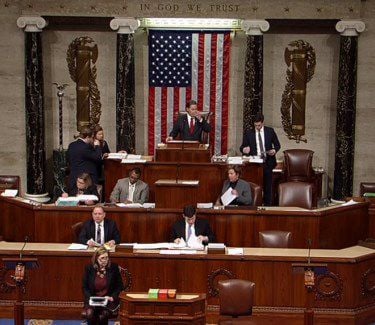Rep. Earl “Buddy” Carter (R-GA) was among the many supporters. “The removal of AM radio and vehicles could be detrimental to the many rural districts across America,” he said. “For starters, the emergency alert broadcast is transmitted on AM radio waves. This means that in the event of a natural disaster, folks in these in these cars, may not be aware of the necessary alerts and critical information.” Carter created the on-air work of iHeartMedia’s news-talk WGIG Brunswick, GA (1440) that provided extensive coverage when there was a massive chemical plant fire in the city.
The role of AM during natural disasters was cited by several lawmakers as they spoke out during the bill’s markup, noting that the Federal Emergency Management Agency has also spent tens of millions of dollars solidifying the Emergency Alert System (EAS) with AM radio as the backbone of the service.
“For those of us who have experienced a natural disaster like Superstorm Sandy, we know that AM radio is an important lifeline when other forms of mass communication go out. It’s an important bill that I believe will help keep Americans safe,” said Energy and Commerce Committee Ranking Member Frank Pallone (D-NJ), who co-sponsored the bill.
Rep. Doris Matsui (D-CA), who has long been a close ally of the tech industry, also acknowledged the role that the traditional format of radio still offers.
“When power grids fail, cell towers go silent and internet connectivity waivers, AM radio remains a steadfast lifeline to connect Americans to emergency communications,” she said. “It can travel longer distances, connecting remote areas with essential information, such as evacuation routes, shelter locations, and weather updates, whether it’s a hurricane, wildfire, or another unforeseen disaster.” Matsui said that the issue of electromagnetic noise generated by EV components may be real, but she believes there’s more work to do, and in the meantime, she thinks keep AM in cars will “safeguard our emergency communication infrastructure while fighting for a more sustainable future.”
If passed by the full House, the proposed AM Radio for Every Vehicle Act will require the Secretary of Transportation to issue a rule requiring access to AM broadcast stations in motor vehicles. If they don’t, carmakers could be fined.
Before the effective date of the rule, manufacturers that do not include AM would be required to put a warning label on vehicles. Automakers would have at least two years to comply with the rule, although some manufacturers that produce fewer than 40,000 passenger cars for sale in the U.S. would have at least four years to meet the requirement.
The subcommittee did pass one update to the bill on Wednesday, which Rep. Gus Bilirakis (R-FL) said would ensure uniform standards nationwide as well as not implicate any vehicles sold by U.S. manufacturers overseas. Bilirakis said the auto industry had raised cost concerns, but it offered no data to back up the claims.
Not all members were onboard with the requirement. Rep. John James (R-MI), whose state is home to the big three automakers, made a passioned argument against what he sees as government overreach into how private business operates.
“Over 98% of new cars today already come with AM radio,” argued James, who said it would take 30 years for most cars on the road to be without AM receivers in the dashboard if they were phased out of every new vehicle today. “We are creating an unfunded, unnecessary mandate for a problem that doesn’t exist,” James said.
Facing steep bipartisan support for the bill, James proposed the requirement be allowed to expire in five years to allow more research and feedback by the industries involved.
But Pallone said creating an artificial sunset of the rule “makes no sense,” and if AM’s role in disseminating EAS alerts changes in the future, the requirement on carmakers could then be reassessed. Other members agreed, and an amendment to put limits on the AM requirement was shot down by a voice vote.
The National Association of Broadcasters celebrated the Commerce’s overwhelming vote advancing the legislation.
“As one of the most reliable and resilient communications platforms, AM radio continues to be a lifeline for communities in times of emergency,” NAB President Curtis LeGeyt said in a statement. “We urge congressional leadership to ensure this bill moves forward and becomes law, safeguarding AM radio’s indispensable service to the public.”
Support for the legislation continues to grow in Washington. In recent weeks, several more members of Congress signed on as co-sponsors of the bill to keep AM radio in vehicle dashboards, bringing the total number of House members backing the effort to 262. In the Senate, the companion bill’s support has climbed to 63 members.
The bill has already made progress in the Senate with its version (S. 1669) passed out of committee in July 2023 and is now in the hands of Senate Majority Leader Chuck Schumer (D-NY). He has not yet scheduled the bill for a final vote, despite having the super-majority required to overcome any potential filibuster.

